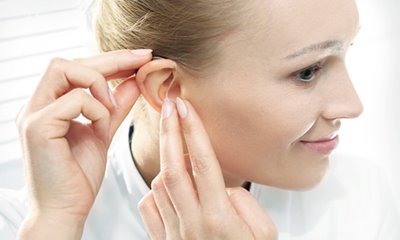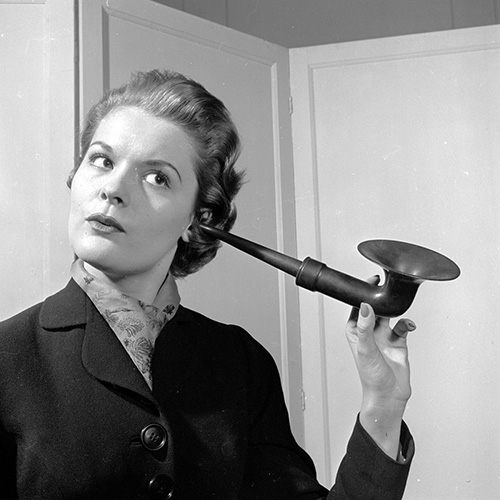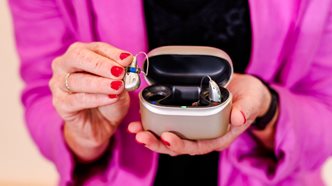_1.jpg?branch=web_prod)
A Historical Journey: Ear Trumpets and the Evolution of Hearing Aids


A Historical Journey: Ear Trumpets and the Evolution of Hearing Aids
10 min.
Publication Date: 3 September 2023
Throughout history, humans have sought solutions to enhance their auditory abilities and restore hearing. Before the advent of modern hearing aids, individuals with hearing impairments relied on various devices, including the iconic ear trumpets. In this article, we delve into the history of hearing aids, explore the functionality and effectiveness of ear trumpets, and shed light on the challenges faced by hard-of-hearing individuals before the invention of hearing devices.
What Are Ear Trumpets and When Were They Invented?
Prior to the invention of hearing devices, individuals with hearing impairments faced significant challenges in their daily lives. Communicating with others was a daunting task, as speech comprehension relied heavily on lip-reading and gestures. Hard-of-hearing individuals were often isolated from social gatherings and struggled to participate fully in conversations, education, and employment opportunities.
In the early 17th century, the first primitive hearing aids emerged in the form of ear trumpets. These trumpet-shaped devices were crafted from various materials such as wood, metal, and even animal horns. The design aimed to capture sound waves and amplify them before directing them into the ear canal.
The earliest description of an ear trumpet was made by the French Jesuit priest and mathematician Jean Leurechon in his work Recreations mathématiques (1634).1
(Image source: Linkedin)

How Does An Ear Trumpet Work?
Ear trumpets operate on the principle of sound collection and amplification. When sound waves enter the wide opening of the trumpet, they are funneled towards a narrower tube that leads directly into the ear. The shape of the device allows the sound to be focused and channeled into the ear canal, enabling individuals with hearing impairments to hear more clearly.
Did Ear Trumpets Actually Work?
While ear trumpets did provide some amplification, their effectiveness varied depending on the design and individual hearing loss. Larger and longer ear trumpets generally offered better amplification. In fact, Beethoven used ear trumpets when he was composing to channel the sound into his ears.
However, ear trumpets had limitations. They were unable to filter out background noise, making it difficult to distinguish between sounds. Moreover, their amplification capabilities were limited to specific tones or frequencies, resulting in distorted or muffled sound perception.2
Was the Ear Trumpet Safe?
Despite their benefits, ear trumpets were not without risks. Their extensive use could lead to ear canal irritation and infections due to the accumulation of dirt and wax. Additionally, the design made it difficult for users to engage in activities requiring mobility or discretion. Ear trumpets were conspicuous and often viewed as stigmatizing, which discouraged many individuals from using them openly.
Technological Advancements in Hearing Aids
The invention of the telephone in the late 19th century brought about a revolutionary change in the field of hearing devices. Electrical hearing aids, introduced in the early 20th century, utilized carbon microphones to convert sound waves into electrical signals.3
These early electrical devices paved the way for the development of modern hearing devices, including analog and digital models, which continue to evolve today.
Today's digital hearing devices have become more automatic in how they pick up, process and amplify sound to help you communicate in difficult listening situations. They may also include Bluetooth and App compatibility, artificial intelligence to learn your preferred program and volume settings, and even rechargeable batteries.
Summary
The history of hearing devices reveals a remarkable journey of innovation and improvement. While ear trumpets played a significant role in assisting individuals with hearing impairments, their limitations and inconveniences eventually led to the development of more sophisticated hearing aid technologies. Today, hearing devices have become smaller, more discreet, and capable of providing personalized amplification and sound processing, greatly enhancing the quality of life for people with hearing loss .
Reference List:
- Wikipedia contributors. (2023, May 12). Ear trumpet. In Wikipedia, The Free Encyclopedia. Retrieved from https://en.wikipedia.org/w/index.php?title=Ear_trumpet&oldid=1154471924 on 11 July 2023.
- Tavartkiladze, G. A., & Chikhladze, N. M. (2019). History of Audiology. In Otology and Neurotology (pp. 61-66). Springer.
- Tyler, R. S. (2017). History of hearing aids. In The Consumer Handbook on Hearing Loss and Hearing Aids (pp. 13-26). Plural Publishing.
Source for preview image: https://www.oprahdaily.com/life/relationships-love/a33014448/how-to-be-a-good-listener/
The information contained in this article is for educational and informational purposes only. You should not use the information as a substitute for, nor should it replace, professional medical advice. If you have any questions about your health, you should always consult with a physician or other health-care professional.
.png?branch=web_prod)
_1.jpg?branch=web_prod)

.png?branch=web_prod)